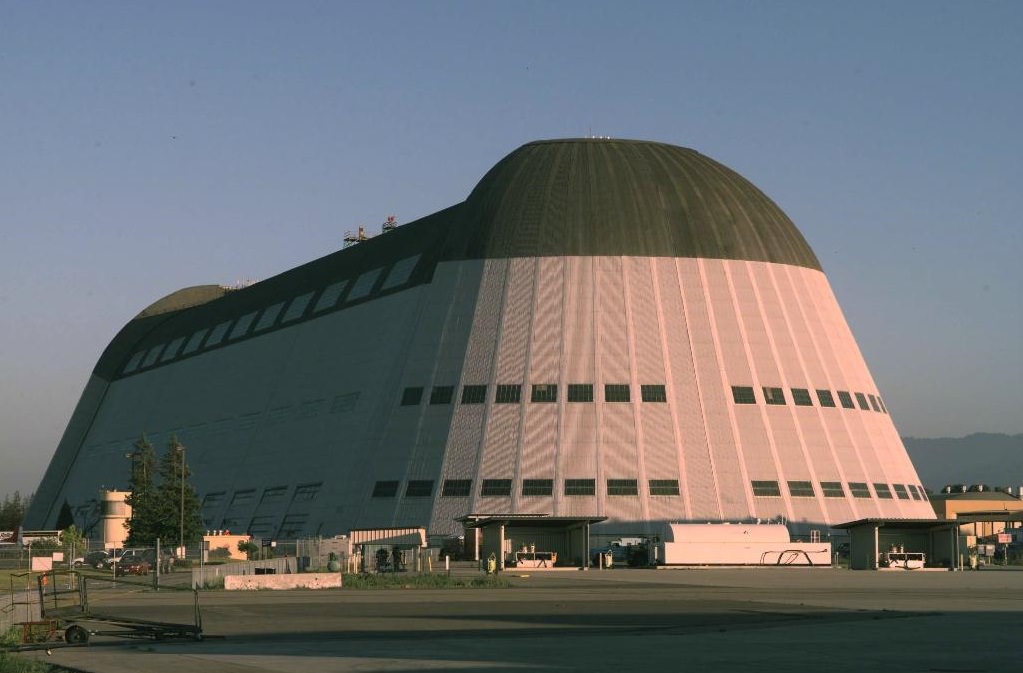Back in late 2011, three Google executives reportedly approached NASA because they knew the agency was facing a problem. NASA was managing the eight-acre Hangar One, which is best remembered for being an airship construction facility 80 years ago. Renovations were getting expensive, though, and the executives had a proposal: it would take over the fixing-up, as long as they could park several private jets in the facility.
Fast-forward a couple of years, and after a competitive process Google real estate subsidiary Planetary Ventures LLC is going to negotiate on a lease with two goals: fix up Hangar One and manage Moffett Federal Airfield. If approved, the lease would remove the NASA Ames Research Center’s management costs.
It’s another example of NASA looking to lease out its historic facilities to the private sector (examples: here and here) to save money amid cost-consciousness by federal legislators, something that administrator Charles Bolden highlighted in a statement. “The agreement announced today will benefit the American taxpayer and the community around Moffett,” he said. “It will allow NASA to focus its resources on core missions, while protecting the federal need to use Moffett Field as a continued, limited-use airfield.”

Lease terms are still being negotiated, but these are some of the things expected to be a part of it: rehabilitating Hangars One, 2 and 3, fixing up a golf course, starting a public use and educational facility, and getting rid of NASA’s operation and maintenance cost of the area, among other things. In a press release, NASA did not give a date as to when these negotiations would conclude.
As Wired points out, this is an indication that Google and NASA are becoming trusted partners in ventures such as this. “It underscores the increasingly tight relationship between Google and the space agency research center, located just three miles from Google’s headquarters,” wrote Robert McMillan. “Google has already leased more than 40 acres of NASA Ames space to build a 1.2-million-square-foot R&D facility, and the company is working with NASA to test the world’s first quantum computer at Ames too.”
You can read the request for proposals and other information on Hangar One at this NASA website.


This is good news for those of us interested in the history of technology. A few corrections, though. Hanger One was not specifically a construction facility, though it was a fair copy of the Goodyear Airdock in Akron, Ohio where the Navy’s rigid airships Akron and Macon were built. The airship seen in the undated photograph is the Macon.
Not a blimp, it was a 785ft long aerial aircraft carrier constructed by the same methods used to make the Hindenburg, but both faster and safer with special apparatus needed to maintain appropriate bouyancy by condensing water vapor from the exhaust as fuel was consumed so that the very precious helium it used would not have to be released to descend.
Both airships were very expensive to build and maintain, especially during the depression years. Also they were each lost at sea only a few years after their years long construction. Hanger One could be compared to the Vehicle Assembly Building at Cape Canaveral in that it was specifically built to maintain the largest concievable such vehicles of that era and then was re-purposed for its smaller cousins, the blimps used for coastal patrol during WWII.
“world’s first quantum computer”?
DWAVE has delivered several quantum computers to customers over the years. There is however ongoing controversy over how really “quantum” the computer operates.
“…and the company is working with NASA to test the world’s first quantum computer at Ames too”.
I’d love to go back in time to when they founded Google and tell Page and Brin this would be a future venture…